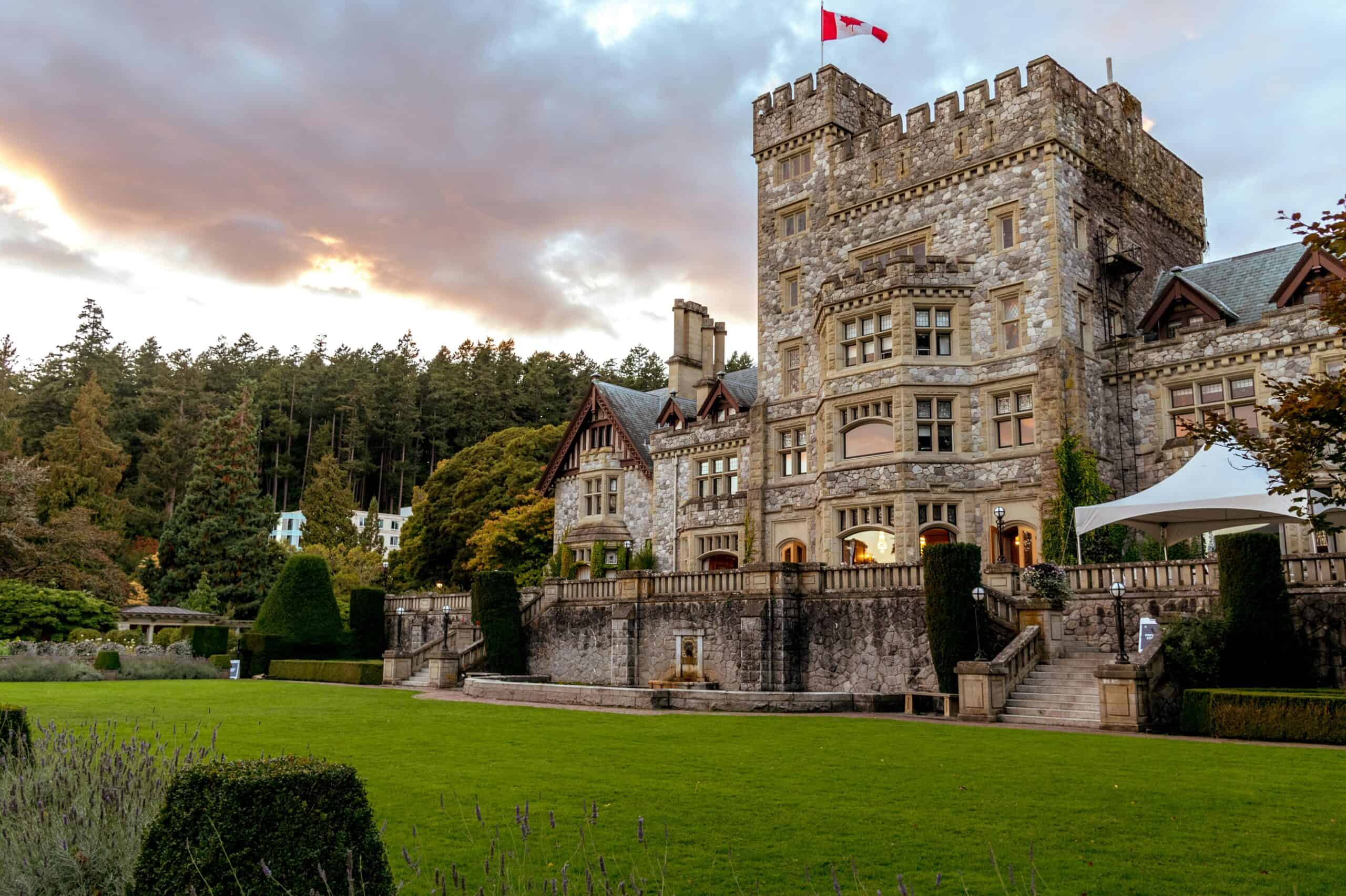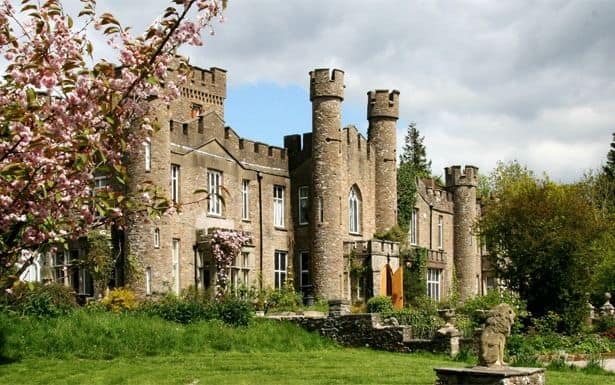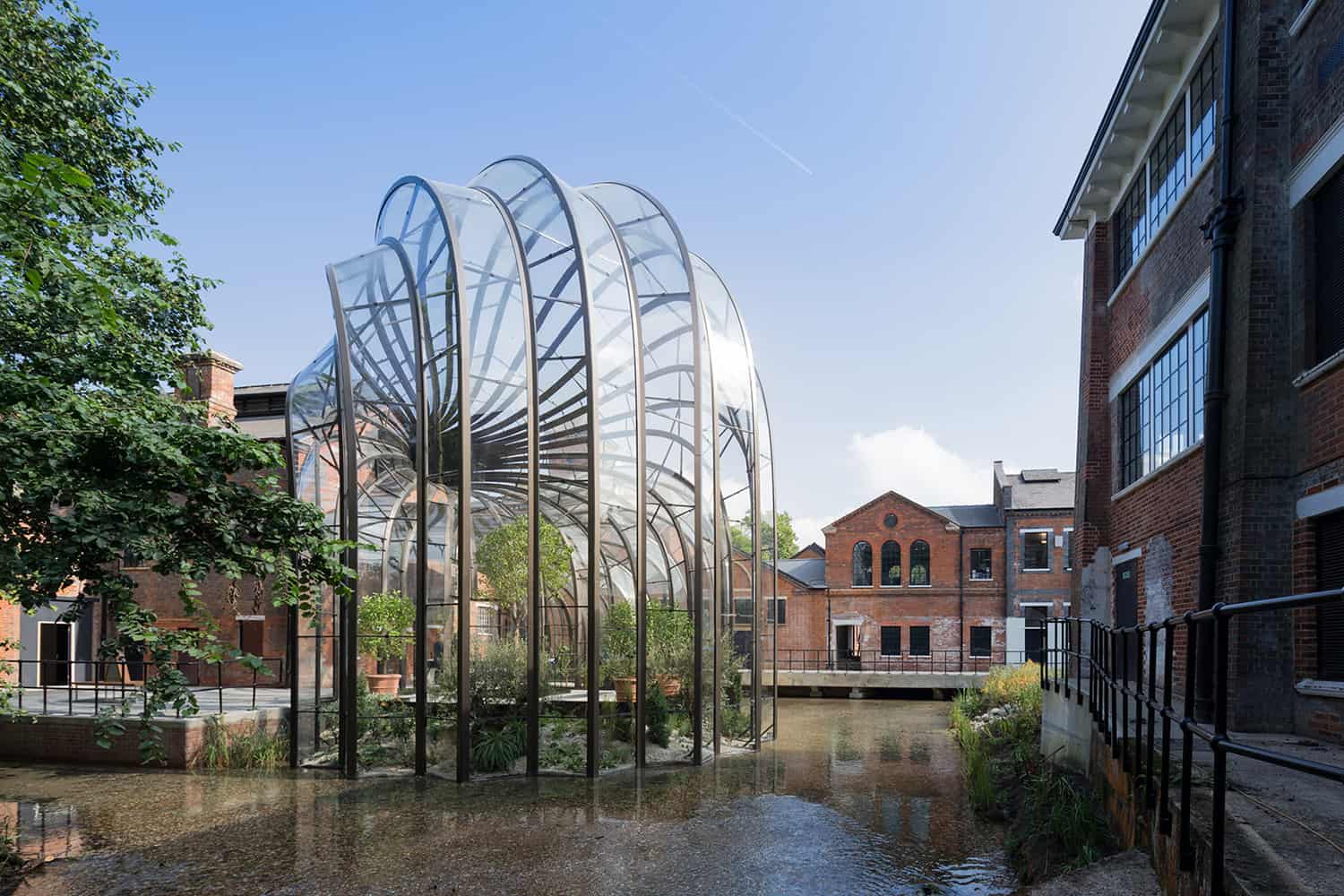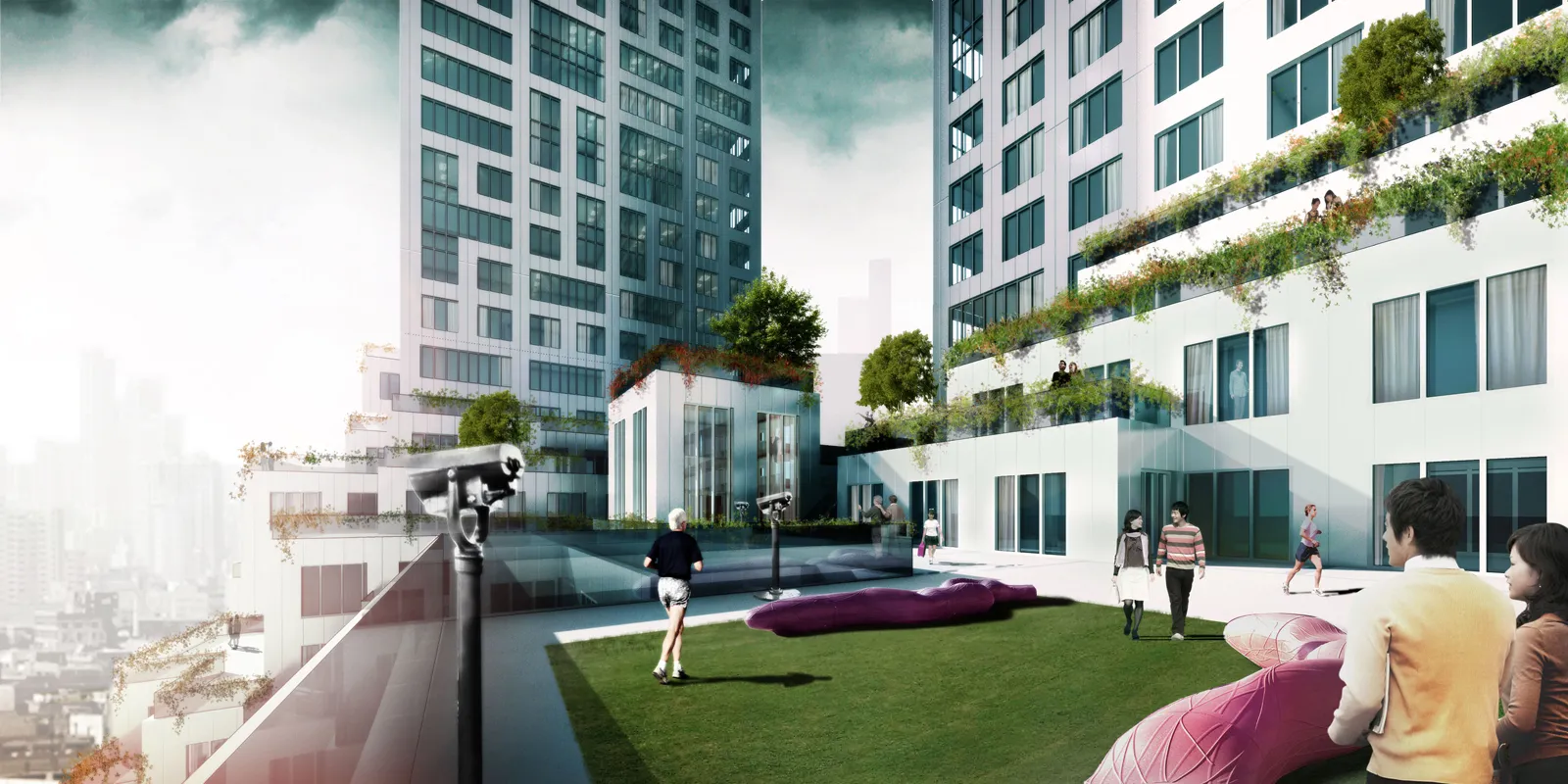Nowadays, staying in a castle does not require royal blood. Particularly in the UK, there are countless castles, often in breathtaking settings, that are bustling with personality and rich in history and legacy. However, unlike in the past, the majority of castle stays in the UK provide the unique opportunity to escape the strains of daily life and live out your fairytale fantasies.
A lot of castle stays have been transformed into boutique retreats, spas, and opulent hotels. In addition to complete hotel amenities, they frequently give bed and breakfast. Some even allow self-catering accommodations, so you can live like a lord or lady. From the Cotswolds, Devon, and Cornwall in the south to Northumberland, Durham, and Yorkshire in the north, these castle hotels can be found all throughout the United Kingdom.
Why Were Castles Built?
Originally, a castle’s main function was to defend the royal occupants from an invasion caused by an enemy attack. Therefore, defense was the primary consideration in their design and construction.
They usually had defenses inside the walls, buildings, watch towers, and tall outside walls. Originally constructed of earth and wood, these buildings were eventually constructed of stone and brick.
Castles were constructed primarily to assert control over vast tracts of territory. Generally speaking, a castle would represent the authority held by the lord or other royal family member who resides there.
How Are Castles Used Today?
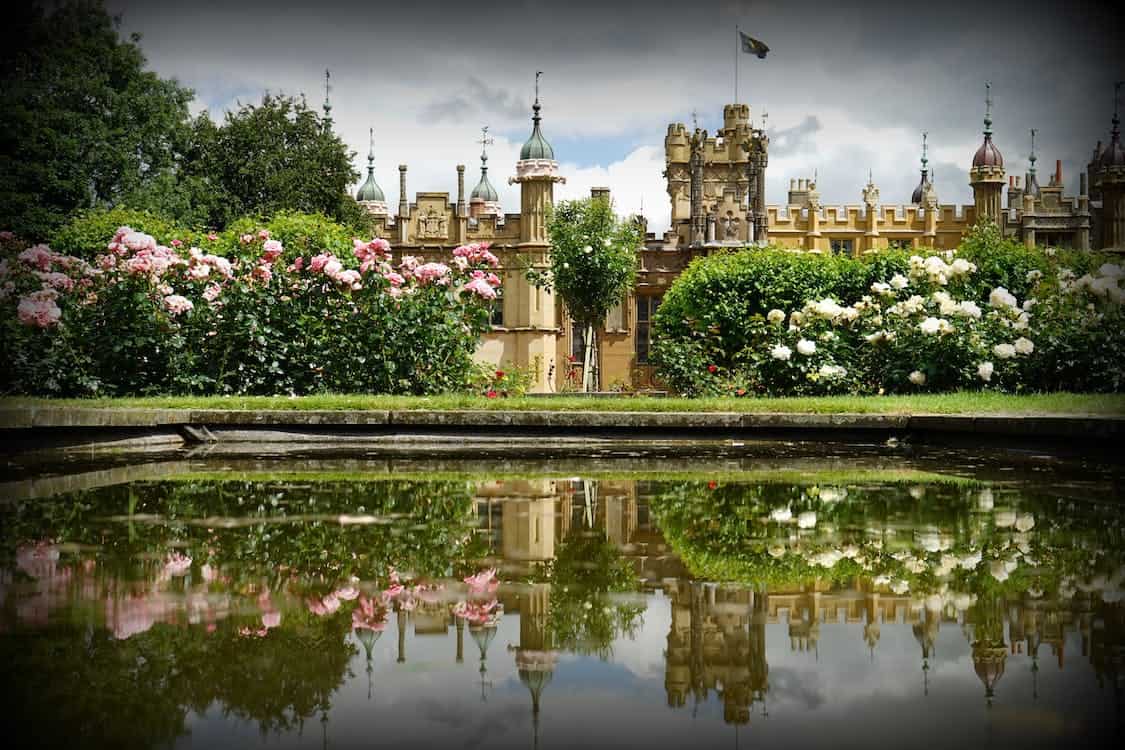
Not every castle has withstood years of inclement weather, battle, and siege. The majority have been restored while maintaining its historic features and original designs.
Nowadays, some castles function as tourist attractions and museums, while others have become homes to royal families. However, most castles have become hotels where people can relax or even host concerts and special events.
Therefore, you can book a night or two in some of the best castle hotels today. However, there are so many incredible options, and you might have difficulty choosing the perfect one. Here are some of the best castle hotels in the UK to make it easier for you.
1. Kinross House
One of the most famous castles in Scotland, Kinross House’s history stretches as far back as 1257. Sir William Bruce contracted the magnificent residence in 1685 as his own home. Through the centuries, the castle was added to and owned by various prestigious families, including King Robert II, until 2011, when it was transformed into a luxurious hotel.
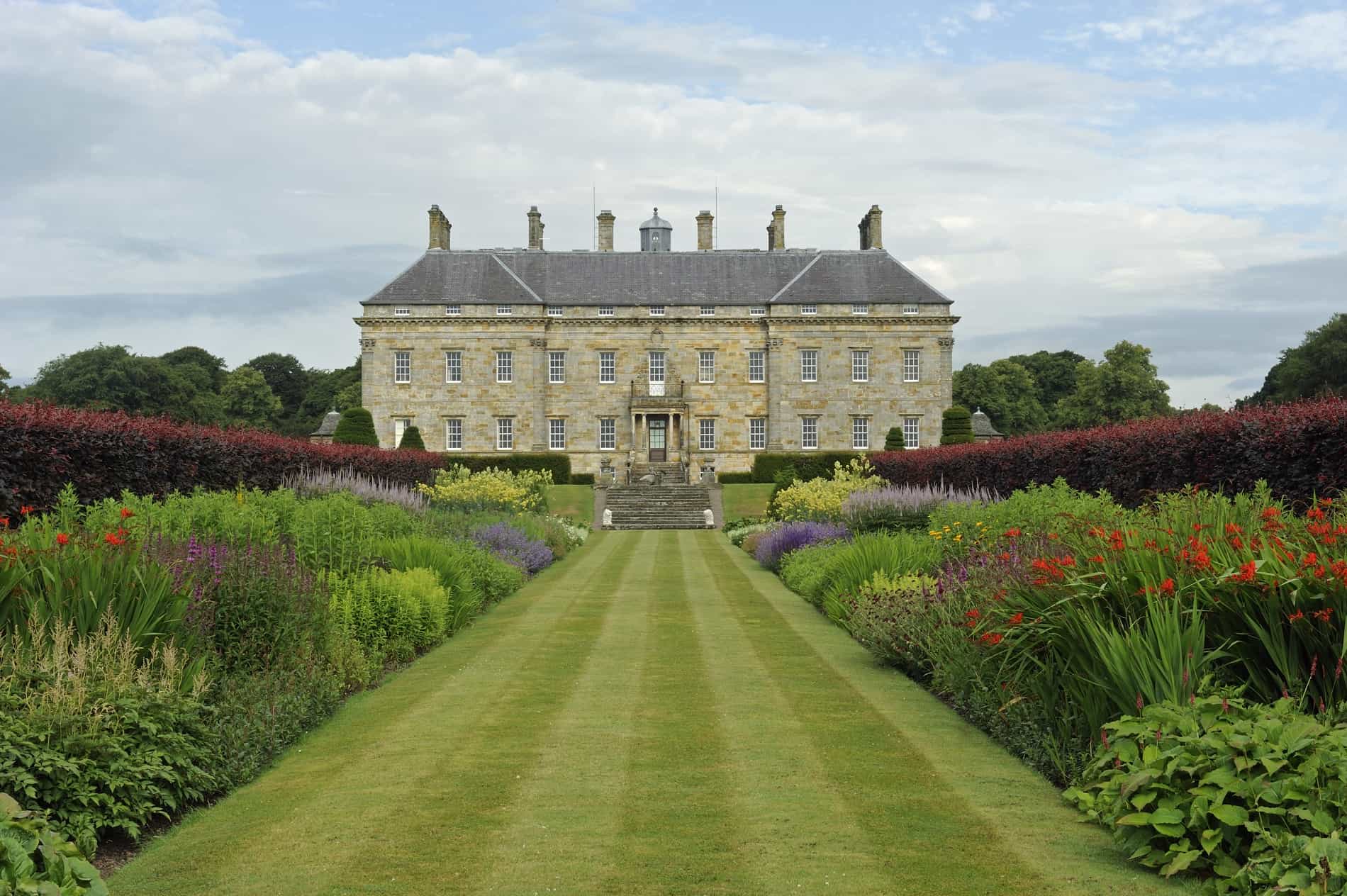
Image credit: historichouses.org
Visitors have been welcome to stay at Kinross House or rent the estate ever since. The location is available for private events, family get-togethers, and the height of luxury.
Up to 48 people can stay in the castle hotel’s stunning residence at once, with 14 guests receiving first-rate ensuite rooms.
The amazing bit is that every single room here is named after an aspect of the estate’s history, character, or location. Again all the rooms are luxuriously comfortable, featuring different furniture with modernized touches and uniquely designed bathrooms.
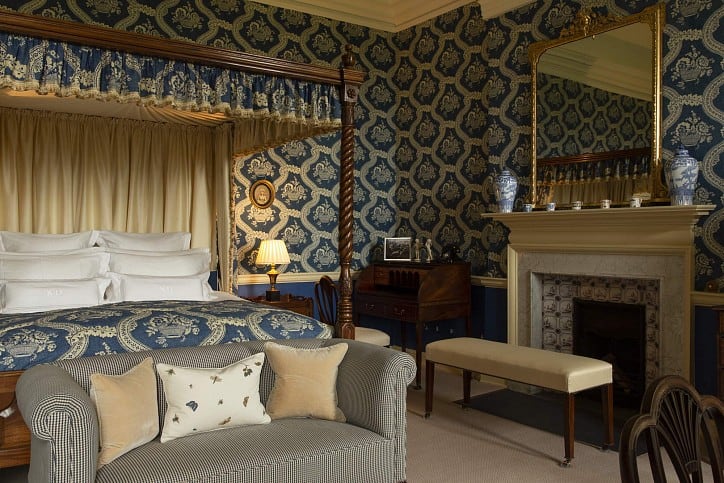
Image credit: kinrosshouse.com
Along with its magnificent accommodations, the castle offers its visitors a fine dining experience and a vast Whisky Library. Visitors can sample a variety of amazing whiskies and learn about the tastes of Scotland’s most well-known beverages at the Library.
2. Hever Castle
Hever Castle is yet another incredible hotel in England that lets you sleep in the same bedrooms as some of the most well-known English royalty. Early in the thirteenth century, the fortress was first constructed.
Anne Boleyn, the king’s brief second wife, moved in with the family during King Henry VIII’s reign. Anne of Cleves, a wife of King Henry VIII, occupied the castle shortly after Anne Boleyn’s passing.
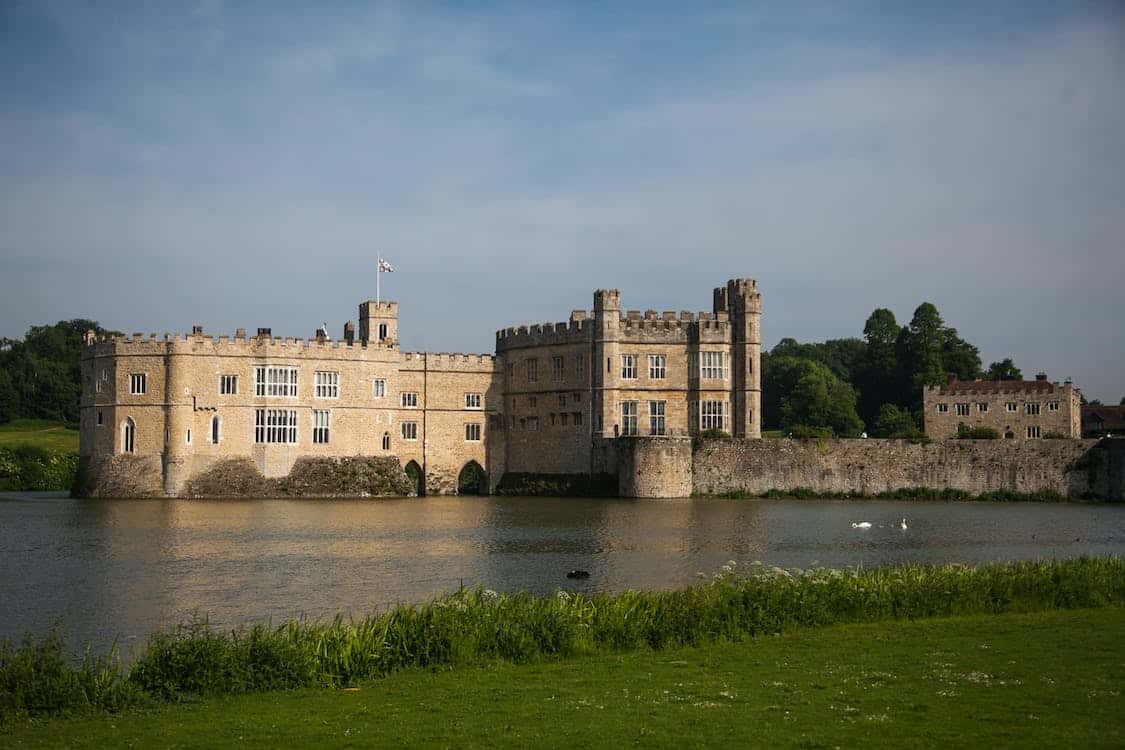
Explore Hever Castle’s 125 acres of formal gardens during the day. Free Wi-Fi is available in the lavish yet contemporary bedrooms of this double-moated castle.
The Anne Boleyn and Astor Wings contain 28 exquisitely decorated boutique rooms with antique furnishings and sumptuous materials. There are rooms with log fires and antique writing tables, and others with oaken four-poster beds.
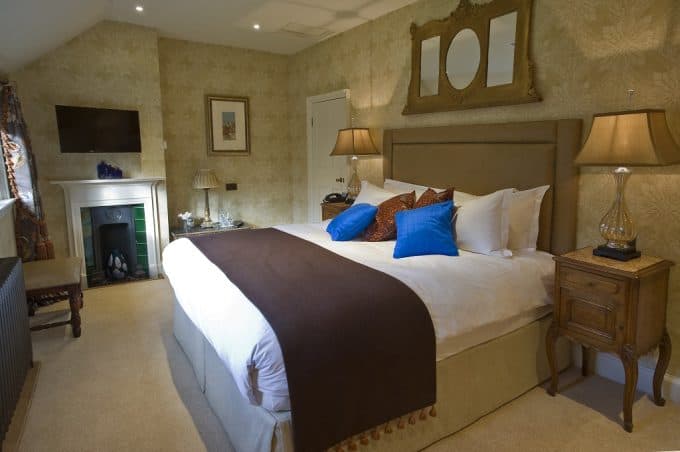
Image credit: hevercastle.co.uk
Remarkably, the Moat Restaurant offers lunch whenever the castle is accessible to the public, and for evening meals, there is a tavern nearby. All visitors are given breakfast in either the Anne Boleyn Wing or the Astor Wing.
The good news is that the castle hotel’s private gated entrance makes it simple to get in. The best part is that there is a private parking lot where visitors can park for free.
3. Langley Castle
Langley Castle is yet another of England’s top castle hotels for a weekend escape. Located in a Northumberland wooded estate, this award-winning Castle Hotel is a stunning 14th-century medieval castle. Henry IV demolished it, and it remained abandoned until the 19th century.
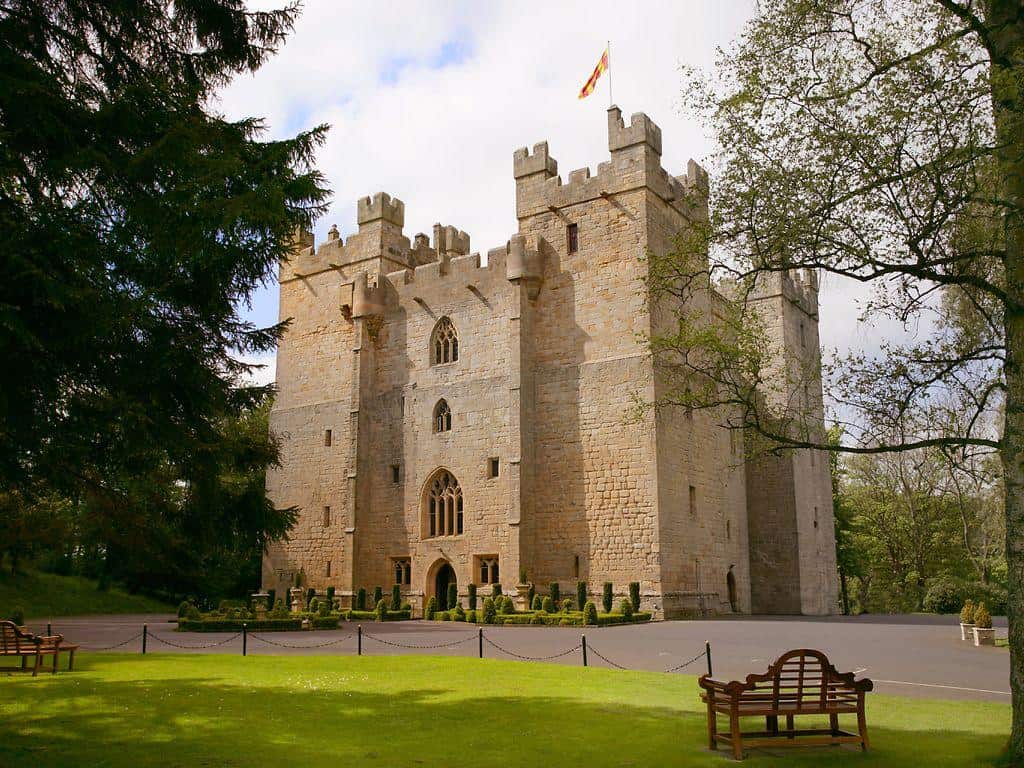
Image credit: offpeakluxury.com
Langley Castle, which is situated on a 12-acre forest estate, has contemporary amenities that will appeal to you. Utilized as a barracks during World War II and then as a school, the castle has undoubtedly seized the opportunity to travel back in time.
With opulent furnishings including four-poster beds, vintage wooden wardrobes, tables, and chairs, it boasts nine of the most opulent rooms. There are even spa baths and saunas in some suites.
In addition, there are eighteen other opulent rooms with stunning views of the castle. The castle’s beautiful grounds and contemporary facilities, such as a restaurant, bar, and a charming drawing room, are open to all visitors, which is an incredible feature.
4. Amberley Castle
was constructed as a mansion in West Sussex in the 12th century, and in 1377 it was fortified. With four-poster beds, Tudor-style windows, and functional fireplaces, the building has been transformed into an opulent refuge over the ages.
The good news is that the castle’s distinctive ancient feel is still there in the walls, gates, and towers.
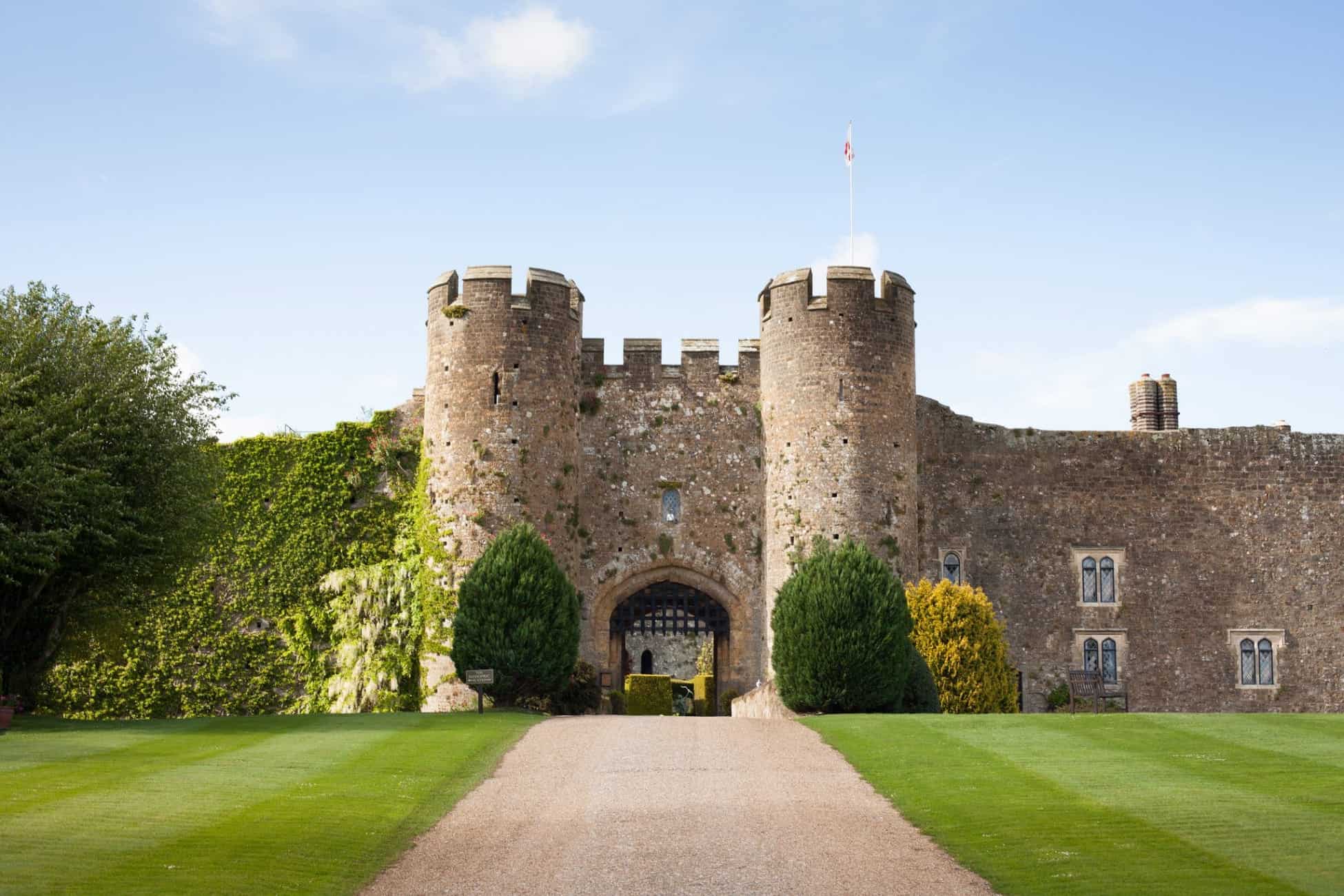
Image credit: ar.trivago.com
There are 19 guest rooms inside the castle walls that are intended to be both comfortable and stylish while preserving the building’s historical features. The apartments are fully equipped with both contemporary amenities and antiques and exquisite textiles. The stunning Queen’s Room restaurant in the castle room, which serves exquisite meals to all visitors, is another place you will love.
5. Lumley Castle
Lumley Castle is yet another of the top castle hotels in County Durham. Since it was transformed from a home to a castle in 1389, the castle has hosted numerous visitors. The 73 distinctively designed rooms at the castle hotel offer the comfort and luxury you desire.
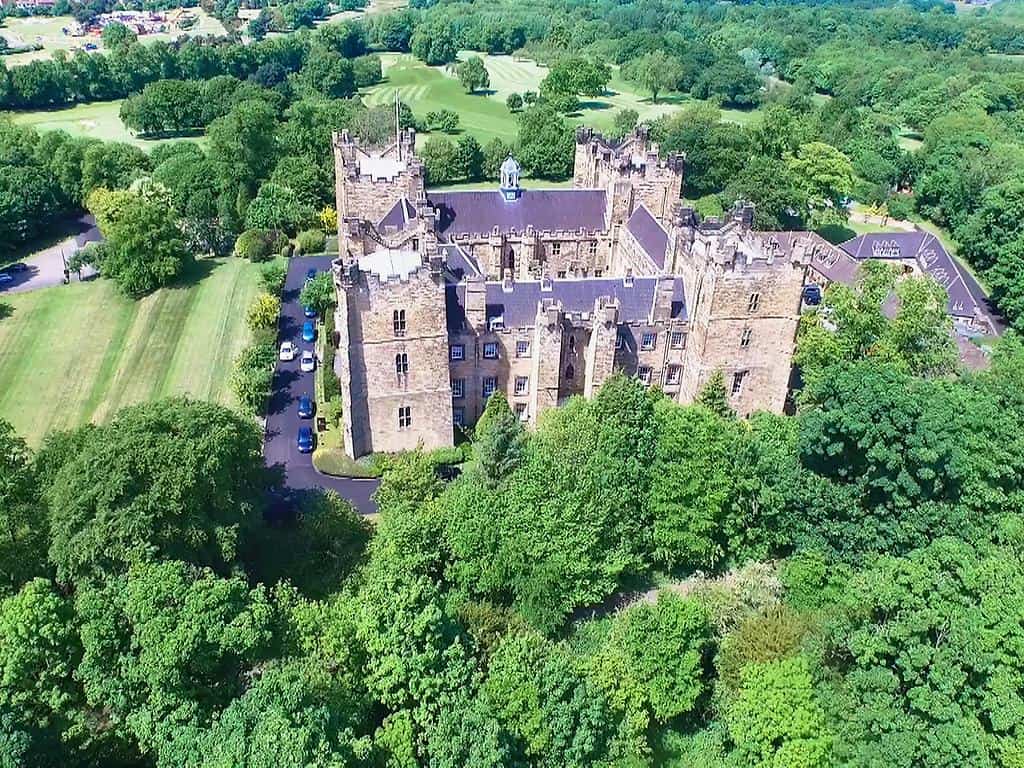
Image credit: countryhotelbreaks.com
Each room features window seats in thick stone walls, feature bathtubs, plush carpets, and four-poster beds. Remarkably, the accommodations also offer free Wi-Fi and breathtaking views. You will eat in the magnificent Knights Restaurant at the castle, which has seasonal Al a Carte Menus.
The best part is that a wide variety of excellent wines will be available to go with your meal. Once more, you can opt for a bed and breakfast stay, have exclusive use, and enjoy exclusive lodging.
6. Thornbury Castle Hotel
Do you want a romantic, fairytale vacation? The Thornbury Castle Hotel on the edge of the Cotswolds is the place to be. It’s not only a luxurious place, but Henry VIII and Anne Boleyn once owned it. This Tudor castle palace provides its guest with helpful workshops in archery and the basics of falconry.
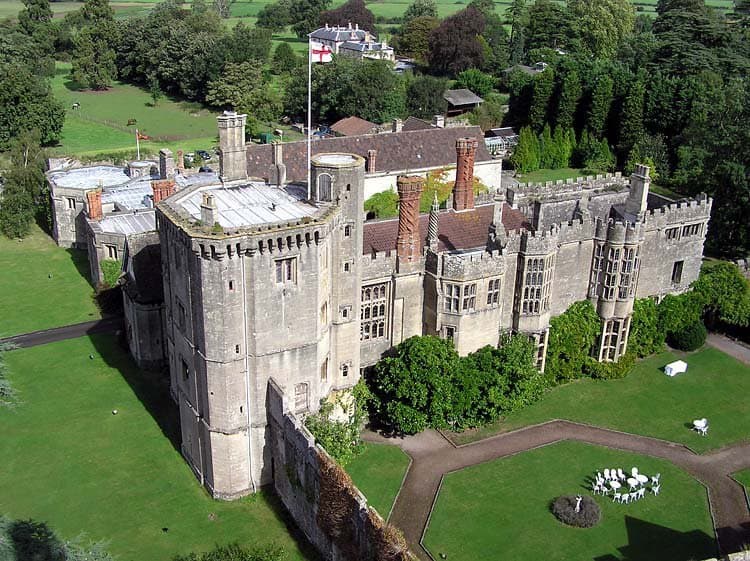
Image credit: smithsonianmag.com
This unique luxury hotel features an elegant stone archway, a rounded tower house, and authentic Tudor architecture. It features stunning Victorian windows, open hearths in the medieval style, charming spiral staircases, and a lovely interior outlook. All of the castle’s rooms have arrow-slit windows, and each suit evokes the castle’s tradition and history.
The Thornbury Castle hotel’s dining experience will also be enjoyable to you. Croquet, archery, clay-pigeon shooting, and falconry are other on-site activities that can be scheduled with advance notice. You should be aware, though, that certain amenities will incur additional fees.
7. Otterburn Castle
If you’re searching for stunning castle hotels in the UK to stay in, you might want to think about Otterburn Castle. When William the Conqueror was in power, this ancient stronghold served as a medieval fortress to guard the Scottish frontiers.
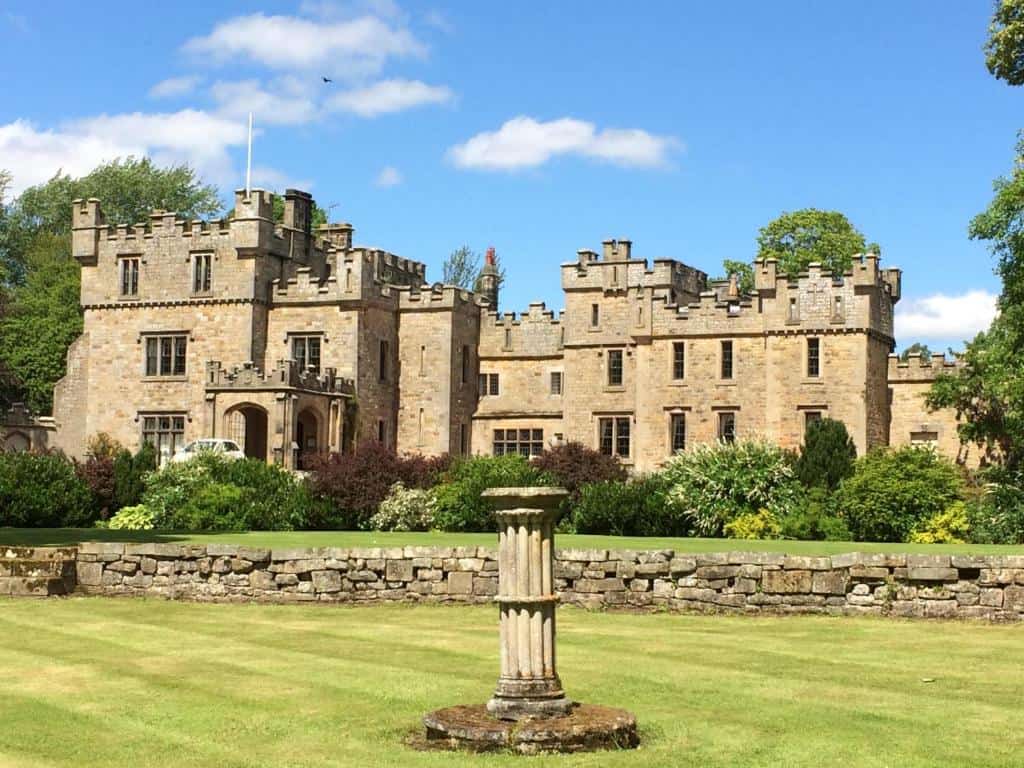
Image credit: planetofhotels.com
The place was upgraded from its original structure of a medieval tower to a picturesque country castle in the Victorian era. Over time Otterburn Castle was redesigned into the luxury hotel, restaurant, and bar it is today. It has 17 unique and exclusive rooms individually designed and furnished.
Every room is exceptionably well-appointed, with most of them having stunning views of the castle grounds. Again all rooms have LCD TVs, Tea/Coffee making facilities, and direct access to daily housekeeping services.
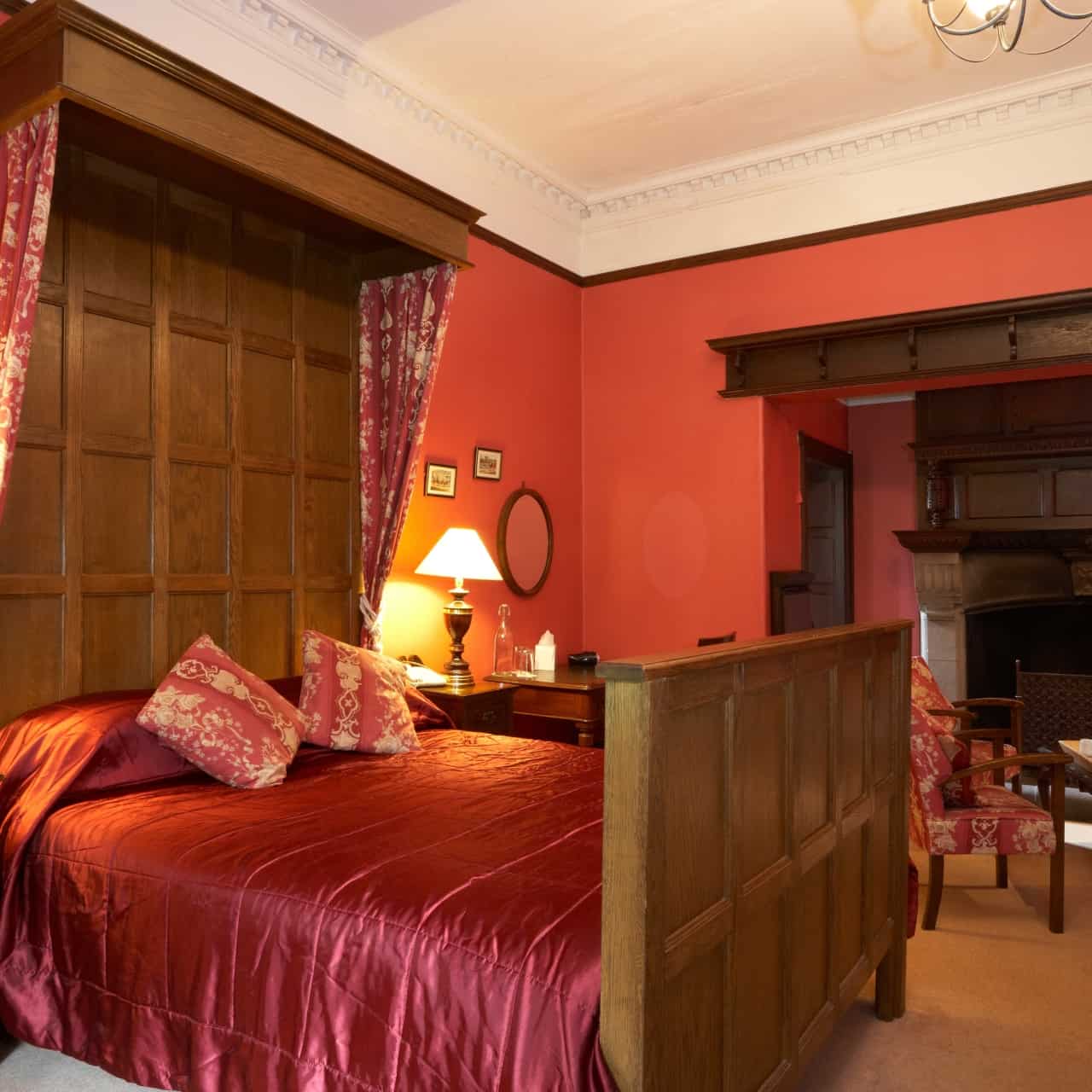
Image credit: hrs.com
Both locals and visitors are welcome to eat at this expansive rural estate restaurant. The restaurant provides a welcoming and comfortable atmosphere for all patrons. With a carefully considered and large wine list to go with the meal, you will truly appreciate dining there.
8. Augill Castle
Augill Castle is yet another fantastic option that will let you take in the breathtaking splendor of the North Pennines and Yorkshire Dales. Built in the neo-gothic style by a wealthy man in the early 1840s, it features towers, turrets, and elaborate windows—all the hallmarks of a castle. The location served as a weekend getaway before being transformed into a five-star hotel.
Image credit: pinterest.com
Augill Castle has 13 rooms, suites, and estate houses designed with a romantic, decadent, and contemporary design. Some rooms suit couples, while others are suited for families. Amazingly, the rooms have a traditional feel, but the garden suites and estate houses are designed to give a modern vibe.
The family-friendly castle features an ESPA spa, a championship golf course, a swimming pool, archery, and a rifle range, for all the guests.
9. Bovey Castle
Bovey Castle Hotel is a great spot to stay whenever you need to unwind. It is situated on 275 acres in the center of England’s Dartmoor National Park. The Bovey Castle Hotel and Spa had many high-profile visitors when it first opened as a hotel and golf resort in 1930.

Image credit: devon.muddystilettos.co.uk
The castle hotel has 60 fully serviced rooms and 22 self-catering country lodges. Each room is designed and built with comfort and luxury in mind. The rooms are individually decorated, with the finishing, furniture, and fabrics used to compliment the warmth and elegance of the place.
The castle also provides one of Devon’s most exquisite and excellent wedding locations. You and your loved ones might enjoy a castle wedding because of its rich history, charm, and grandeur. Once more, you are welcome to stroll around their classic 18-hole golf course.
10. Crossbasket Castle
Crossbasket Castle is a stunning home from the 17th century that has been thoughtfully remodeled into an opulent hotel. It is situated on 14 acres of beautifully landscaped grounds and offers access to a riverbank path that leads to a tiny waterfall.
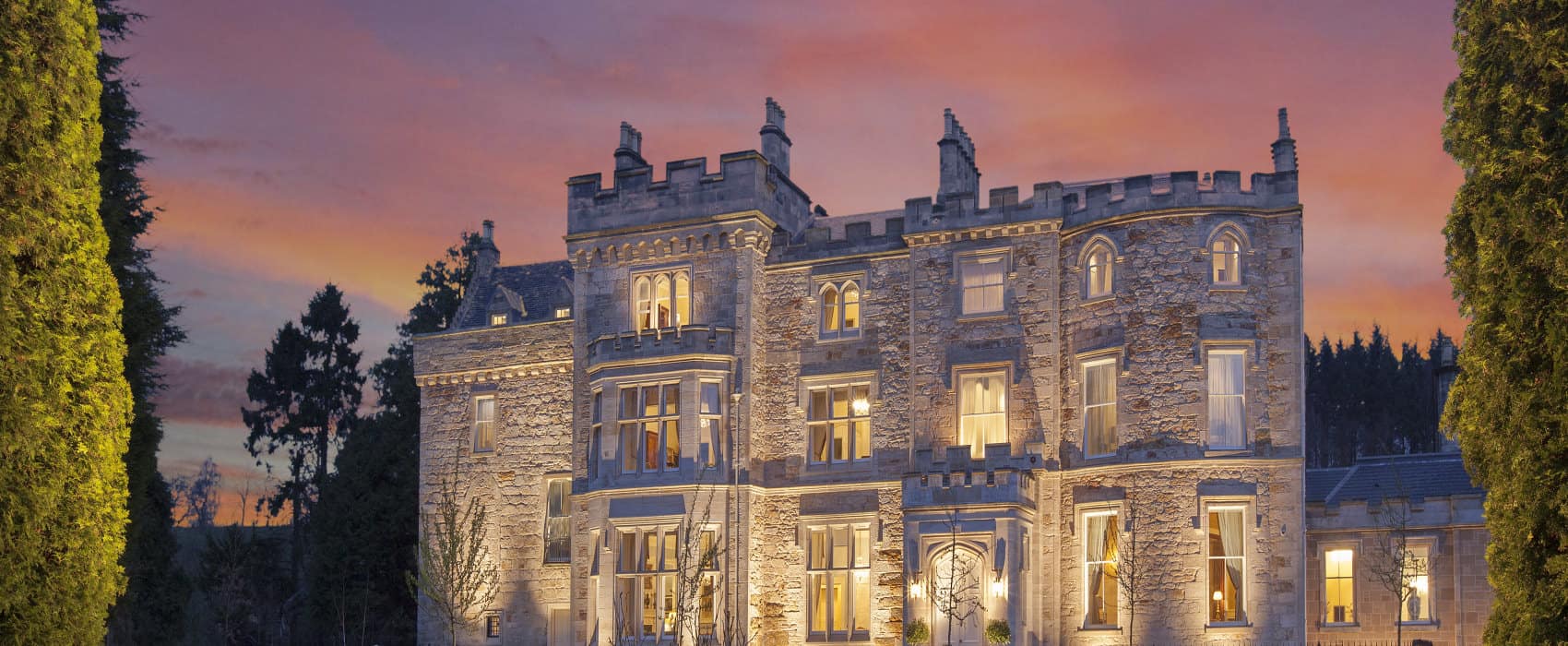
Image credit: crossbasketcastle.com
The castle hotel features large rooms with elaborate gold leaf cornicing, chandeliers, ceiling roses, draperies, wood paneling, antique furniture, and classic and luxurious preferences. Each bathroom has marble floors, rainfall showers, Quercus products, and classic Lefroy Brooks fixtures.
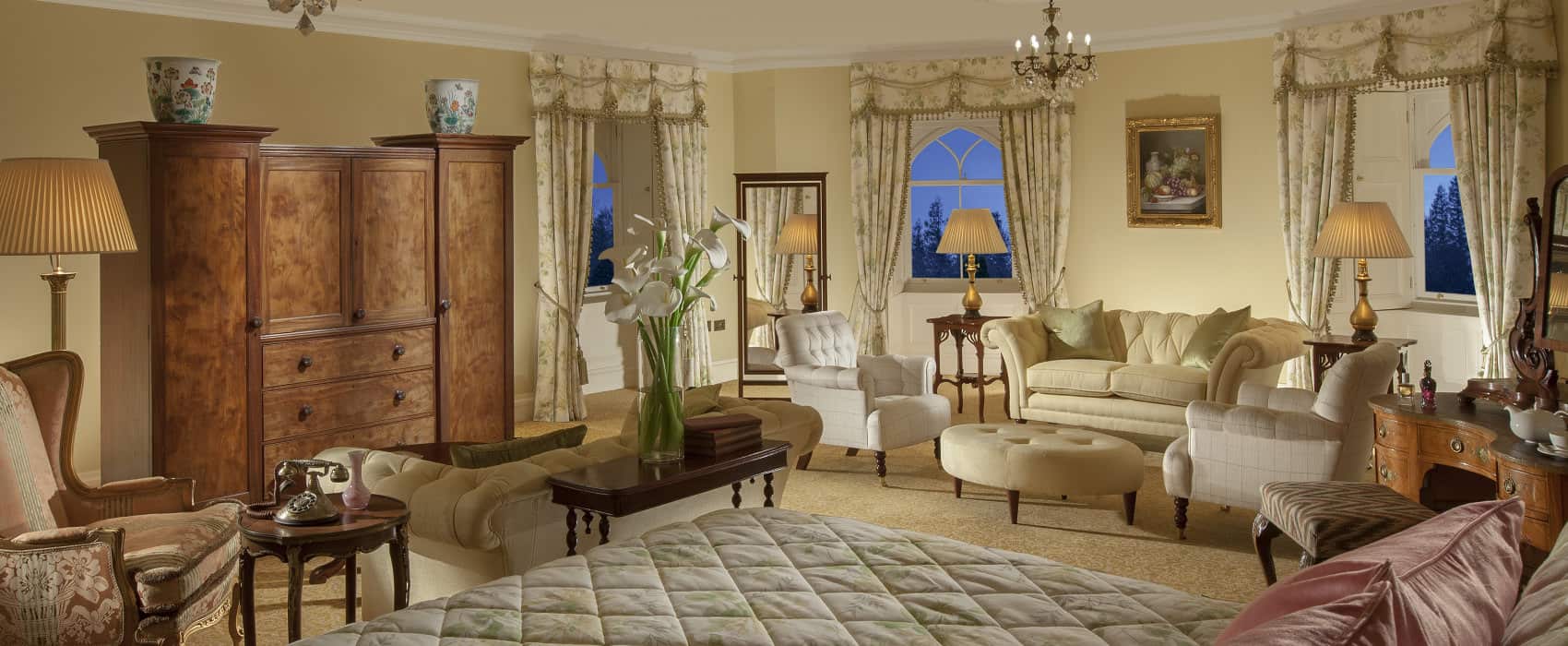
Image credit: crossbasketcastle.com
The Castle View Restaurant at this historic hotel offers a view of the castle while you eat. In addition to its comprehensive wine selection, the Albert and Michel Roux Jr. Restaurant offers tasting, dinner, lunch, lounge, and afternoon tea menus.
Why Do Castle Stays make for a Luxurious Getaway?
Staying in a castle provides a distinctive and remarkable holiday experience. Here are a few reasons for this:
1. Unique Experiences and Amenities
Staying at a castle offers a variety of conveniences and experiences that are unavailable elsewhere. Numerous castles provide activities outdoors including falconry, horseback riding, and archery. Additionally, you can take advantage of excellent service, good food, and spa treatments. Castle stays have something to offer everyone, whether you’re searching for a laid-back or exciting vacation.
2. Luxurious Accommodations
In terms of accommodation, castle stays provide sumptuous and sophisticated rooms in lavish locations. High-end furniture, contemporary conveniences, and stunning vistas are to be expected. Antique furniture, elaborate tapestries, and four-poster beds are frequently used to adorn the chambers. Jacuzzi tubs, fireplaces, and private balconies are other features that suites may have.
3. Immersive Cultural Experiences
A castle stay provides a unique opportunity to become fully immersed in the local history and culture. Museums, art galleries, and exhibitions that highlight the history of the castle and its surroundings can be found at many castles. Cultural events like wine tastings, cooking courses, and traditional dance performances are also available for you to partake in.
4. Privacy and Exclusivity
A castle provides privacy and exclusion that are not available at a hotel or resort. The castle grounds will be exclusively yours, as many castles are closed to the public. This enables you to take in the castle’s calm and peace without being surrounded by others.
How to Plan a Castle Stay
For a castle stay to be memorable and pleasurable, careful planning and research are necessary. When organizing a castle stay, follow these steps:
1. Research and Booking Accommodations
Finding and reserving accommodation is the first stage of organizing a stay at a castle. Online travel agencies, the castle’s official website, and specialized booking websites that only offer castle stays are some of the resources accessible for making reservations.
Think about location, facilities, available activities, and cost while selecting a castle.
2. Accesibility and Transportation
Transportation is a crucial factor to take into account while organizing a castle stay. Due to their rural locations, many castles may be difficult to reach by public transit. It’s crucial to look into your options for getting around, whether it’s by public transit, taxi, or private transfer. When making your reservation, find out if the castle offers shuttle services.
When planning a stay at a castle, it’s important to think about how you’ll get there and whether you’ll need to make travel arrangements or rent a car. Furthermore, it’s critical to take into account the castle’s accessibility, since certain castles could not be appropriate for those with mobility impairments or may have restricted accessible.
3. Activities and Tours
Since castles frequently provide a range of excursions and activities, it’s crucial to plan ahead and make reservations in order to avoid disappointment. Activities could range from cultural events like wine tasting or cooking workshops to outdoor pursuits like hiking, archery, or falconry, depending on the castle.
Guided tours of the castle, historical landmarks, or museums may be included in the tours. Ask about the tours and activities that are offered during your stay, and make your reservation in advance to guarantee availability.
4. Cost
The price is one of the most important practical factors to take into account when booking a castle stay. It might be costly to stay at a castle, particularly if you’re looking for a luxurious experience. The location, facilities, and history of the castle can all affect how much a stay there costs. It’s crucial to do your homework and make appropriate plans before making a reservation. To save money, it’s worthwhile to investigate any package offers or seasonal discounts that certain castles could be offering.
5. Weather Considerations
The weather must also be taken into account while organizing a castle stay. Many castles are found in areas with erratic or harsh weather, like Scotland or Ireland, where it can frequently rain, wind, and get chilly. It’s crucial to learn about the local environment and make plans appropriately, packing weather-appropriate apparel and equipment. When organizing a castle visit, it’s also important to take the season into account because some castles might be closed or have limited availability during particular times of the year.
6. Dining and Meal Planning
Meal planning and dining selections are important considerations when organizing a visit at a castle. A lot of castles have excellent eating experiences, but they frequently have dress codes, so bring clothes that fit.
A breakfast in bed or room service may also be available at certain castles. To ensure your needs are met, let the staff know if you have any special dietary needs when making your reservation.
7. Packing
Take into account the local climate and dressing requirements when packing for a stay at a castle. Bring clothes that are suited for the dining room and other formal events, as many castles have dress codes. Additionally, depending on the location, the climate may change, so dress appropriately.
8. Check-In and Check-Out
Take note of the check-in and check-out times while organizing your stay at the castle. Planning is crucial because many castles have set check-in and check-out periods. Ask about possibilities for storing your luggage if you want to arrive early or depart late.
Conclusion on Castle Stays
Castle stays offer a unique and luxurious travel experience that will leave a lasting impression. From the grand architecture to the rich history, there is something truly special about spending the night in a castle room. Whether you’re looking for a romantic retreat, a family vacation, or a unique venue for a special occasion, a castle stay is a one-of-a-kind way to immerse yourself in history and luxury.
For that unique UK vacation, a sumptuous hideaway in a famous castle is essential. The chance to sleep in a four-poster bed and wake up in a room fit for a king or queen will only come once in your lifetime. So unwind and take in the stunning landscape of Britain. You won’t regret picking one of these castles for your ideal retreat, after all.
Frequently Asked Questions on Castle Stays
1. Can you Spend a Night in a Castle?
Yes, you can stay overnight at a castle. There are numerous castles that have been transformed into hotels all around the world, providing visitors with the chance to stay in an opulent and distinctive environment. From comfortable rooms to opulent suites, castle hotels provide a variety of lodging options in both great estates and medieval fortifications.
A few castles additionally include extras like outdoor recreation, spa treatments, and exquisite eating. Visitors can immerse themselves in history and culture while taking use of contemporary conveniences and luxuries during an amazing overnight stay in a castle.
2. What is the Safest Room in a Castle?
Castles used to be constructed with defensive elements like drawbridges, moats, and high walls to stave off attacks. The keep or the tower, which was usually the last line of defense in the event of an invasion, is frequently one of the most secure chambers in a castle. Intruders found these apartments challenging because they were often found at the highest point of the castle and could only be reached by a narrow staircase or ladder.
The keep or tower room was often equipped with arrow slits, allowing defenders to shoot arrows at attackers while remaining protected. However, it’s worth noting that many castles have been renovated and converted into hotels or museums, and the security features may no longer be in place. In modern castle hotels, safety features such as fire alarms, smoke detectors, and emergency exits are a top priority to ensure the safety of guests.
3. Where Do Servants Sleep in a Castle?
In castles, servants live in separate wings or on the lower floors. In order to prevent disturbing the master and his family, servants’ quarters were frequently situated off from the main living rooms. With separate sleeping quarters for male and female servants as well as accommodations for other staff members like chefs and stablehands, the servants’ quarters may be quite large in larger castles.
Servants’ quarters were often basic and functional, with simple furnishings and minimal decoration. The living conditions of servants varied widely depending on the era and location of the castle. Still, they were generally expected to work long hours and live in modest conditions.
4. Why are Castles Expensive?
The expense of staying in a castle or going there as a visitor is typically a reflection of how costly it is to construct, maintain, and run one. Castles are costly for the following reasons:
-
- Historical significance: Many castles are centuries-old and considered important historical and cultural landmarks. As such, they require extensive preservation and restoration work to maintain their integrity and ensure they continue to be enjoyed by future generations.
-
- Maintenance costs: Castles are large structures that require a lot of upkeep, from cleaning and maintenance to ongoing repairs and renovations. The costs associated with maintaining a castle can be significant.
-
- Location: Castles are often in scenic locations, such as hilltops or by the sea, which can drive up the cost of property and construction.
-
- Amenities: Many castle hotels offer a range of amenities and services, such as fine dining, spa services, and outdoor activities. These additional amenities add to the cost of staying in a castle.
-
- Limited supply: There are a limited number of castles worldwide, which means that demand for castle stays or tours can be high, driving up prices.
5. Who Can Live in a Castle?
Throughout their lengthy and illustrious history, castles were mostly inhabited by affluent landowners, monarchy, and aristocracy. But since many castles have been turned into hotels or private homes in recent years, anyone can theoretically live in a castle as long as they can afford to buy or rent one.
While owning a castle may be out of reach for most people, there are opportunities to stay in a castle or even rent one for a special occasion, such as a wedding or family reunion. Many castle hotels offer luxurious accommodations, fine dining, and a range of activities, making them a popular choice for those seeking a unique and memorable travel experience.
It’s worth noting that while castles can be beautiful and impressive, they may not always be practical for modern living. Many castles lack modern amenities, such as central heating, plumbing, and electricity, making them challenging to live in year-round. Additionally, the cost of maintaining a castle can be substantial, making it difficult to justify as a primary residence for most people.
In conclusion, although everyone can theoretically live in a castle, most individuals may not find it to be a feasible or economical choice. However, anyone interested in history, culture, and opulent lodging can take advantage of the one-of-a-kind and amazing experience that castle stays and tours provide.
6. What is the Difference between Castle and Palace?
Although both castles and palaces are large, striking buildings, they differ significantly in their architecture, history, and functions.
Castles are usually fortified buildings that were once built for defensive reasons, including shielding the lord and his family from invading forces. Typically constructed during the medieval era, castles frequently have high walls, turrets, and other defensive elements. Lords, knights, and other nobles usually lived in castles, which were also frequently employed as administrative hubs.
On the other hand, a palace is a grand, luxurious residence typically built for monarchs or other ruling elite members. Palaces were often used for entertaining guests, holding court, and conducting official business. Palaces are typically associated with more recent historical periods and are often associated with the Baroque or Renaissance architectural styles.
In terms of architecture, castles are often characterized by their imposing defensive features, such as walls, towers, and moats. Conversely, palaces are often characterized by grand, opulent interiors and elaborate decoration.
The primary distinctions between castles and palaces are found in their architectural characteristics, historical context, and functions. Originally, palaces were built for entertainment and luxury, whereas castles were built for protection. Castles tend to have greater defensive architecture and are usually connected to the medieval era. Palaces, on the other hand, tend to have more lavish and ornamental architecture and are generally connected to more recent historical eras.
